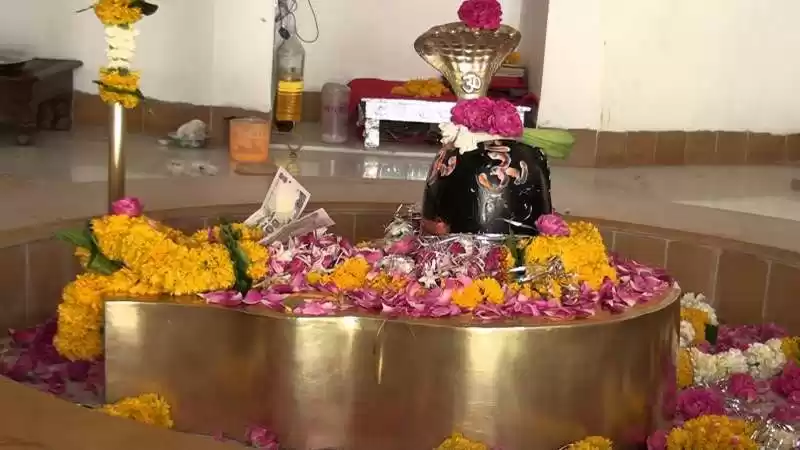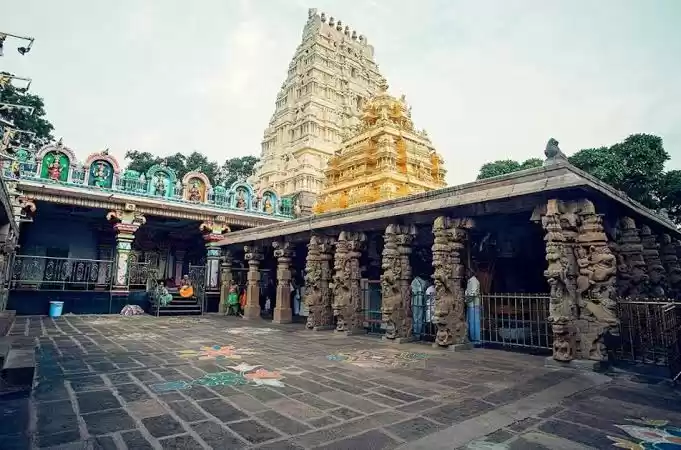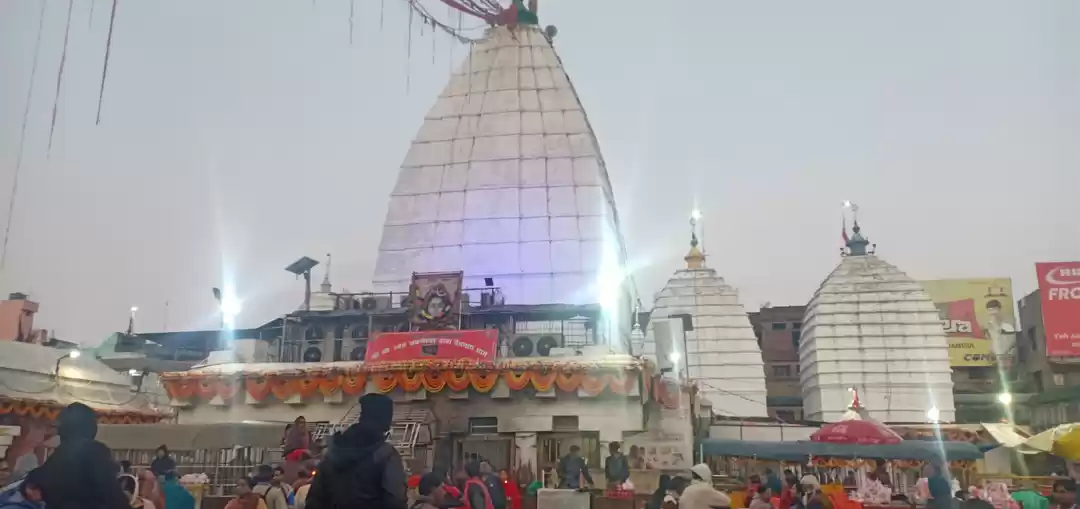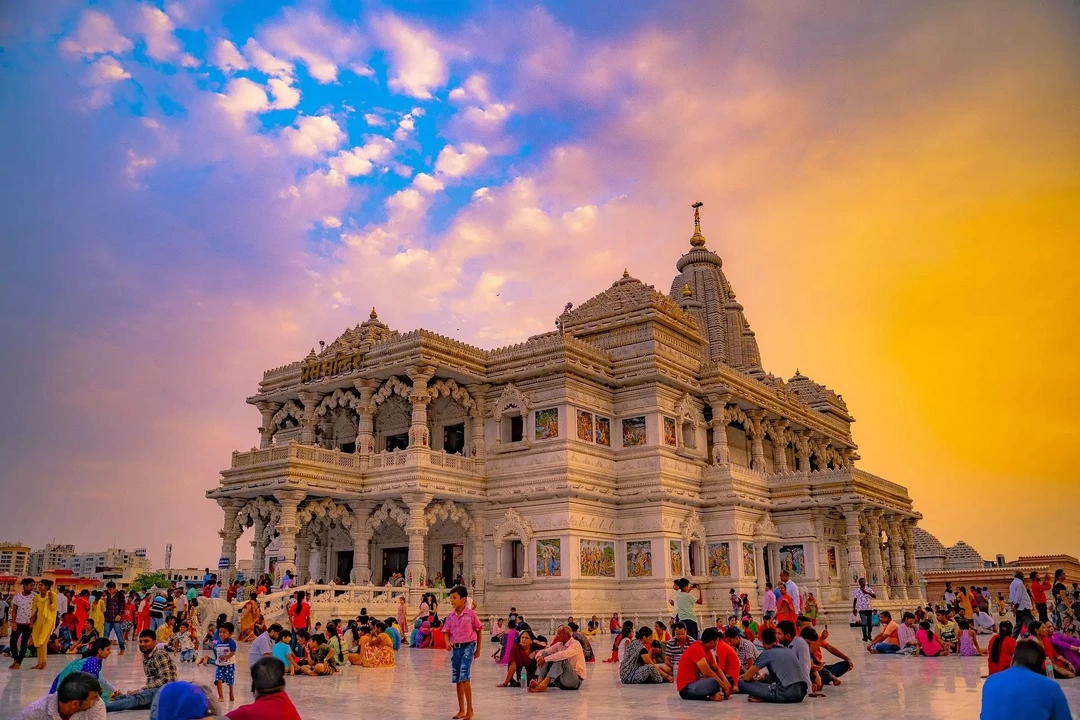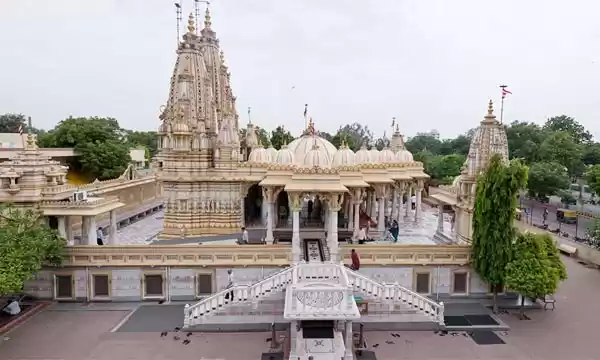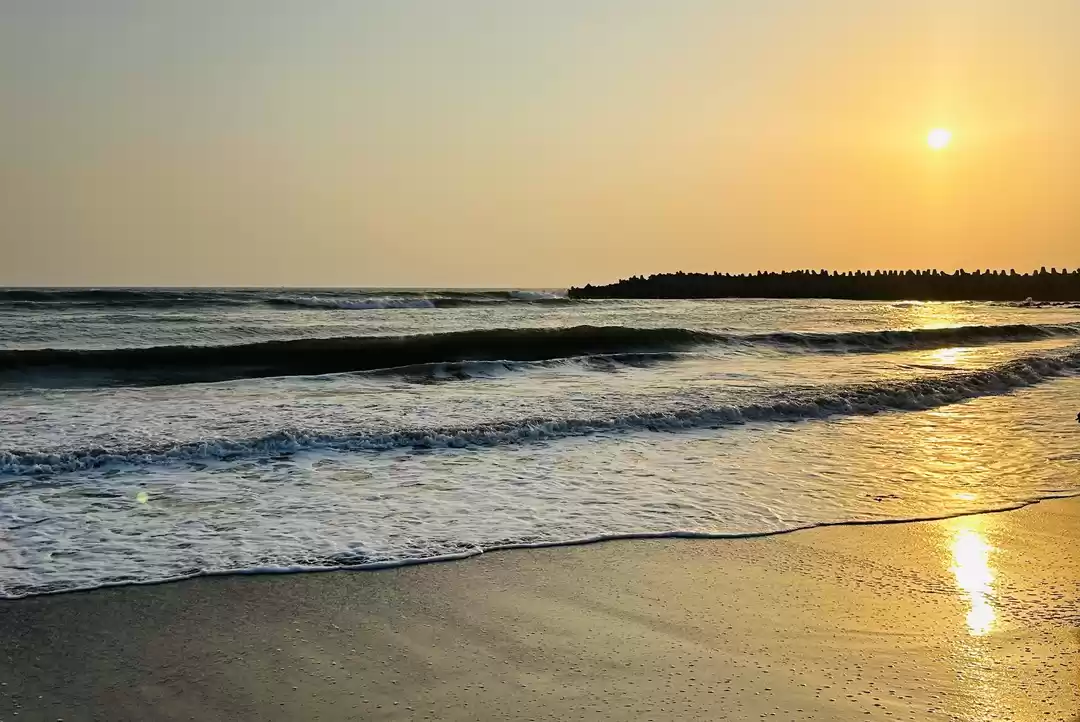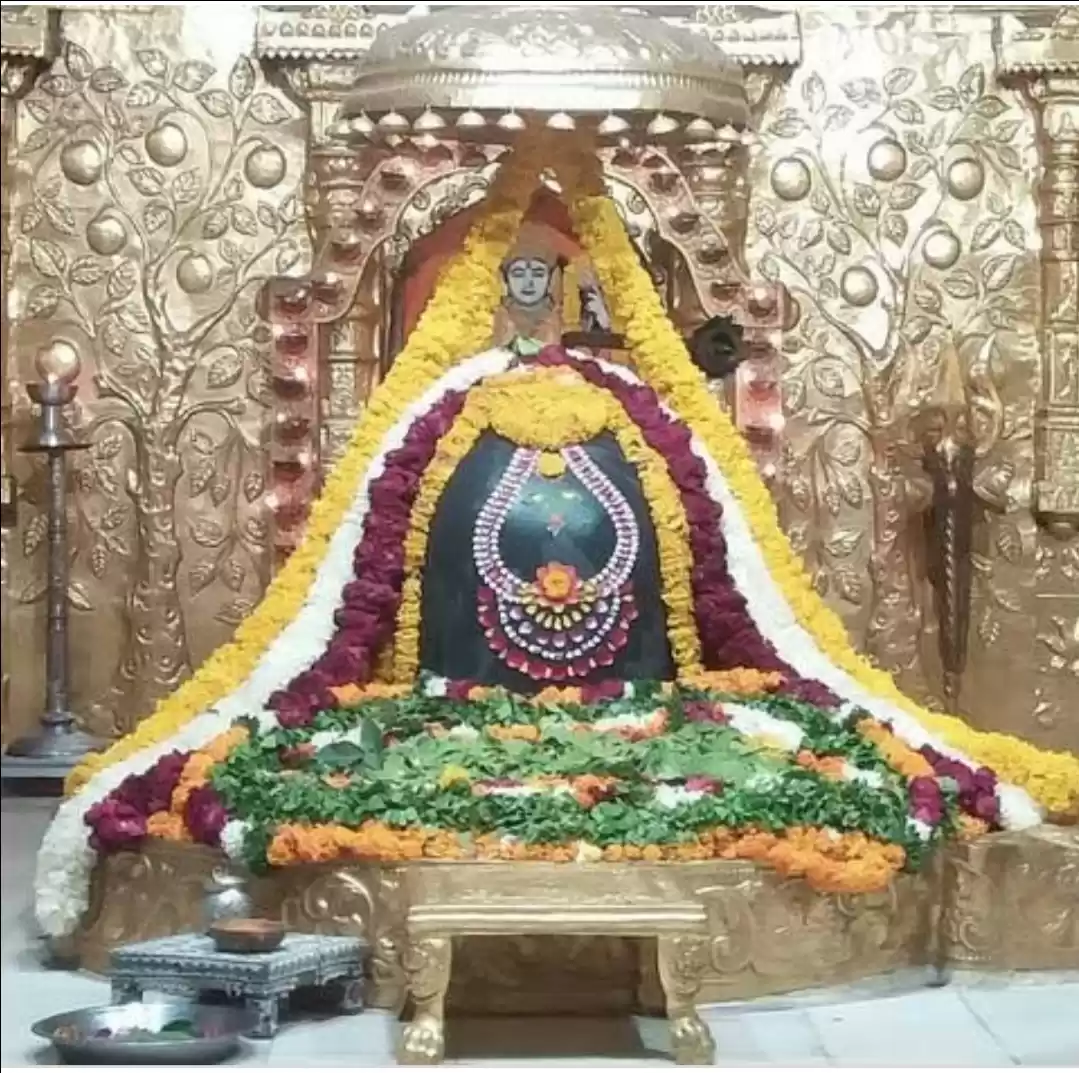Somnath Temple, Gujarat:
Dedicated to Lord Shiva, the Somnath Temple is one of the most important spiritual sites in the Hindu circuit. Believed to be the first of the 12 jyotirlingas (devotional shrines of Lord Shiva) in the country, the temple sees a large footfall every year. Skirted by the Arabian Sea, the temple commands a spectacular view of the Saurashtra peninsula.
Boasting an imposing architecture of the Chalukyan style, the Somnath Temple with its striking shikhara (spire) is 50 m tall. Silver doors, intricate carvings, a shivling and a Nandi idol (bull god) add to the splendour of the building.
The huge courtyard of the temple has an equally large mandapa (hall) and the main shrine, whose arches tower over the whole temple complex. After paying obeisance, devotees can slip through a side door to find an ethereal view of sunlight tripping over the sea waves.
In the month of November, the Kartik Purnima fair organised here attracts a large number of pilgrims.


Nageshwar Shiva Temple, Gujarat:
One of the oldest temples in the country that has also been mentioned in the Shiva Purana, Nageshwar Shiva Temple is dedicated to Lord Shiva.
It is one of the 12 jyotirlingas, where the idol of the lord is said to be swayambhu (self-existent). The deity is worshipped in the form of a 25-m-high statue of Lord Shiva in a sitting position. The temple is a scenic spot surrounded by well-kept lush green lawns and boasts a notable architecture.
Legend has it that a group of dwarf sages worshipped Lord Shiva in Darukavana. Lord Shiva appeared before them as a nude ascetic wearing only serpents on his body, to test their devotion and patience. On seeing the saint, the wives of the sages got attracted to him and left their husbands behind, which angered the sages.
They lost their patience and cursed the ascetic to lose his linga. A shivling fell on earth leaving the entire world shaken. When Lord Brahma and Lord Vishnu requested Lord Shiva to save the earth and take his linga back, Lord Shiva accepted their request and promised that he will be forever present in Darukavana as a jyotirlinga.


Mahakaleshwar Temple, Madhya Pradesh:
One of the 12 jyotirlingas in the country and among the most prominent temples in Ujjain, Mahakaleshwar Temple is dedicated to Lord Shiva. The lingam (a symbolic representation of Lord Shiva) at Mahakaleshwar resides in a subterranean chamber and is believed to be swayambhu or self-manifested. The present temple is a five-storey structure and was constructed midway during the 18th century.
Built in Bhumija, Chalukya and Maratha styles of architecture, the temple is an architectural marvel. Of note are its marble walkways that were restored in the latter half of the 19th century by the Scindias.
Three floors of the building are occupied by lingams of Mahakalesvara, Omkaresvara and Nagachandresvara, respectively. The Nagachandresvara lingam is accessible for devotees only on the occasion of Naga Panchami. There is also a kunda (tank) in the premises called Koti Tirtha that has been built in the sarvatobhadra style.
On the path from the stairs of the kunda to the temple you will come across several images of the original structure of the temple, reflecting its grandeur during the period of the Paramaras (9th and 14th centuries). Located near Rudra Sagar, the temple holds a special Bhasma Arti for which devotees gather here as early as 4 am. There is an enthusiastic vibe in the air and the lit diyas make for a stunning sight.


Sri Ramanathaswamy Temple, Tamil Nadu
The most popular attraction of Rameswaram, Sri Ramanathaswamy Temple invites pilgrims from all corners of the world. Dedicated to Lord Shiva, it houses one of the 12 jyotirlingas (special devotional shrines of Lord Shiva).
The word 'Ramanathaswamy' means the master of Rama and refers to Lord Shiva, to whom Lord Rama prayed before setting for his journey towards Lanka to save Goddess Sita from the clutches of Ravana.
The architecture of the temple is noted for its intricate carvings, majestic towers and lavish corridors, which are lined with imposing sculptured pillars.
There are as many as 1,212 pillars in the temple. The temple has 22 theerthams or sacred baths, in which, as per belief, taking a dip washes away one's sins. The temple remains open on all days of the week from 5 am to 1 pm and then from 3 pm to 9 pm.

Omkareshwar, Madhya Pradesh
Omkareshwar is home to one of the 12 jyotirlinga temples in the world. Dedicated to Lord Shiva, the temple is nestled in the Omkar mountain, an island in the middle of River Narmada.
The temple has a large sabha mandap (prayer hall) standing on 60 brown huge stone pillars. The five storeys of the temple have different deities each and three prayer services are conducted in the temple everyday. While the morning prayer is done by the temple trust, the other two prayer meetings are held by the priests of the Holkar and Scindia states.
The temple draws pilgrims in large numbers who also visit the nearby Mamleshwar temple. Taking a dip in the Narmada river before going inside the temple is considered auspicious. The ancient shivling in the temple is barricaded by a glass box to avoid destruction.

Vishwanath Mandir, Uttar Pradesh
One of the most popular attractions in Varanasi, the Vishwanath Mandir, also known as Kashi Vishwanath Temple, is dedicated to Lord Shiva, the presiding god of the city.
Also referred to as the golden temple, due to its gold-plating, this temple holds a very special place among Hindu devotees. Given its present shape in 1780 by queen Ahilya Bai Holkar of Indore, the temple's iconic 15.5-metre-high gold spire and gold dome were donated by Ranjeet Singh, the ruler of Punjab in 1839.
The temple is ensconced within a maze of other shrines and narrow galis or walkways lined by shops selling sweetmeats, paan (betel leaf), handicrafts and other knick-knacks. The time for darshan (general visit) is from 4 am to 11 pm. Adjacent to the temple are Annapurna Temple dedicated to the goddess of food and Dundiraj Vinayak dedicated to Lord Ganesha, which are equally revered. The temple is located on the banks of River Ganges and the jyotirlinga (devotional shrine of Lord Shiva) present here is believed to be the 12th jyotirlinga.
The temple campus also has a well called Jnana Vapi or wisdom well. Many believe that the jyotirlinga was kept in the well to protect it and the main saint of the temple jumped into the well to keep it from intruders. The temple finds immense significance in Hindu mythology as many great saints from the religion are believed to have visited this site to get the darshan of the jyotirlinga and to bathe in the holy waters of the Ganga.

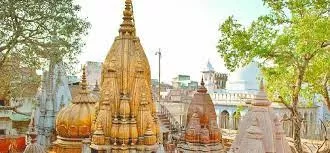
Trimbakeshwar Temple, Maharashtra
Located on the outskirts of Nashik, the ancient Trimbakeshwar Temple was constructed by the third Peshwa Balaji Bajirao (1740-1760) at the site of an even older temple. It sits at the foot of the Brahmagiri Hill and is flanked by the hills of Nilagiri and Kalagiri.
Made entirely of black stone, it is a beautiful pilgrimage center for Hindus, dedicated to Lord Shiva. It is located near the town of Trimbak, from where River Godavari originates. Kusavarta, a pond within the temple premises, represents the origin point of the holy river.
The temple is among the most important in the region as it houses one of the 12 jyotirlingas. The focal point of the shivling here is the fact that it is a three-faced linga embodying Lord Brahma, Lord Vishnu and Lord Shiva. The linga is adorned by a crown made of diamonds, emeralds and other precious stones. The crown is displayed every Monday for an hour in the evening.
Within the temple, you will also come across images of other gods and goddesses such as Goddess Gangadevi, Lord Jaleswara, Lord Rameswara, Lord Gautameswara, Lord Kedarnath, Lord Rama, Lord Krishna, Lord Parasurama and Lord Lakshmi Narayana.
While you’re here, you can also explore the impressive Brahmagiri Fort, and Gangadwar, located in close vicinity to the temple.
Bhimashankar Temple, Maharashtra
Dedicated to Lord Shiva, the Bhimashankar Temple is sixth among the 12 jyotirlingas (devotional shrines of Lord Shiva) in India. Rajasthani and Gujarati influences can be clearly seen in the Nagara (or Indo-Aryan) architectural style of the garbha griha (sanctum sanctorum) and shikahara (tower) of the temple.
You can view scenes from Indian epics including Mahabharata, Ramayana, Krishna Leela and Shiv Leela on the outer walls of the sanctum. In the courtyard, the records of grants given to the temple are inscribed on the walls. Constructed by Nana Phadnavis during the 18th century, this temple also boasts a sabhamandap.
While the structure itself is fairly new, the shrine as well as the Bhimarathi river find mention in literature dating back to as early as the 13th century. Bhimashankar is also the source of River Bhima, which merges with River Krishna near Raichur.


Grishneshwar Temple, Maharashtra
Lying close to the Ajanta and Ellora Caves in Aurangabad, this jyotirlinga is also called Ghushmeswara or Grishneswara. The temple was constructed by Queen Ahilyabai Holkar of Indore, in the Maratha style of architecture. It is made of red and black stones and boasts intricate carvings and patterns.

Kedarnath Temple, Uttarakhand
One of the char dhams, the Kedarnath Temple welcomes lakhs of devotees every year. The pilgrims undertake an arduous but devotional journey to reach this 3,584-m high shrine dedicated to Lord Shiva.
The temple is one of the 12 jyotirlingas (devotional shrines of Lord Shiva) in the country, and is thus considered specially holy. The sanctum sanctorum houses a conical rock formation that is worshipped as Lord Shiva’s Sadashiva (ever auspicious) form. This 1,000-year-old temple is made out of giant stone slabs arranged over a rectangular platform. There are inscriptions in Pali language on the steps leading to the sanctum sanctorum.
The inner walls have sculptures of various gods and scenes from Hindu mythology. It is said that the temple was built in the 8th century by sage Adi Shankaracharya and has undergone several renovations over the years. Every year in November, the idol of Lord Shiva is shifted from the Kedarnath Temple to Ukhimath since the entire temple gets covered in snow during winters.
In May, the idol is reinstated in Kedarnath.There is an interesting legend behind this religious place. It is said that Lord Shiva turned himself into a bull to evade the Pandavas when they were looking for him to seek atonement for their sins after fighting the epic Mahabharata battle. When the Pandavas spotted Lord Shiva, he hid inside the ground, leaving only the hump visible on the surface of the earth.


Baba Baidyanath Dham, Jharkhand
The most prominent temple in town that draws devotees in hordes every year, the Baba Baidyanath Temple is revered as both a jyotirlinga (devotional representation of Lord Shiva) and a shaktipeeth (devotional shrines where the severed body parts of Goddess Shakti fell). The temple is among the 12 sacred jyotirlingas in the country and is dedicated to Lord Shiva.
It also houses idols of Lord Ganesha and Goddess Parvati. Prayers begin at 4 am and first the head priest worships with shodashopachar (sixteen services). Then, devotees are allowed to worship the Lord. Legend has it that this is the place where the king of Lanka, Ravana, sacrificed his ten heads one by one to Lord Shiva. Seeing this, the Lord descended on earth and healed Ravana's injuries.
Thus, Shiva is called 'vaidhya' meaning doctor or healer. While there are several such legends associated with this sacred land, history too proves its importance. A mention of the temple can be found from 8th century AD, during the rule of the last king of the Gupta dynasty, Adityasena Gupta. During the Mughal period, Raja Man Singh, the ruler of Amber, is said to have built a pond here, which is known as Mansarovar.
The temple faces the east and is a plain stone structure with a pyramidal tower, which is 72 ft high. Atop it are three compactly set gold vessels, along with a punchshula (five knives in a trident shape). There is also an eight-petaled lotus called Chandrakanta Mani.


Baba Baidyanath Dham, Jharkhand
Situated on the banks of River Krishna, this temple is popularly called the 'Kailash of the South'. Lord Shiva is worshipped as Mallikarjuna, while Goddess Parvati is revered as Bhramaramba. As per a legend in Shiva Purana, when Lord Ganesha got married before his brother, Lord Kartikeya, the latter was furious. Mallikarjuna Temple, Andhra Pradesh
Situated on the banks of River Krishna, this temple is popularly called the 'Kailash of the South'. Lord Shiva is worshipped as Mallikarjuna, while Goddess Parvati is revered as Bhramaramba. As per a legend in Shiva Purana, when Lord Ganesha got married before his brother, Lord Kartikeya, the latter was furious.
He then went to a remote mountain and refused to see anyone, even his parents. Lord Shiva and Goddess Parvati were quite hurt seeing their son's condition and Shiva assumed the form of a jyotirlinga and stayed in the mountain with the name of Mallikarujna. Today, devotees believe that if they even see the tip of the mountain, they will be freed of all their sins.



















